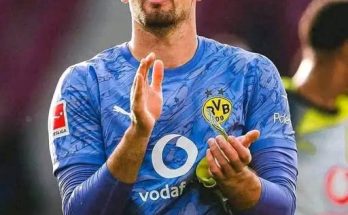The Dallas Cowboys have once again waived former Auburn defensive tackle Marlon Davidson, a move that not only raises questions about the team’s defensive line depth heading into training camp but also underscores the ongoing challenges Davidson has faced in trying to establish himself in the NFL.
Originally selected by the Atlanta Falcons in the second round of the 2020 NFL Draft, Davidson entered the league with high expectations after a standout collegiate career at Auburn. He was known for his versatility, disruptive presence on the interior, and his unique blend of power and athleticism. At Auburn, Davidson was a cornerstone of the Tigers’ defense, lining up alongside future NFL star Derrick Brown and helping form one of the most dominant defensive fronts in college football during the 2019 season. His college résumé included 14.5 career sacks, multiple All-SEC honors, and the kind of intangibles that made him a leader in the locker room.
But since entering the NFL, Davidson’s career has been anything but smooth. Injuries have plagued him from the start. In his rookie season with the Falcons, he was limited to just eight games. His second year wasn’t much better, appearing in just 11 contests before being placed on injured reserve yet again. Despite occasional flashes of potential, including a memorable interception return for a touchdown against Tom Brady in 2021, Davidson struggled to find consistency and health—two crucial pillars of success at the professional level.
The Falcons eventually released Davidson in 2022 after just two seasons, cutting ties with the defensive tackle they once saw as a building block. Since then, Davidson’s career has taken on a journeyman trajectory, bouncing from team to team in search of a fresh start and a stable role. He signed with the San Francisco 49ers in early 2023 but didn’t make it out of training camp. Later that year, the Los Angeles Chargers gave him a brief opportunity, but again, the stint was short-lived.
Then came the Cowboys.
Dallas picked up Davidson ahead of the 2024 season, giving the former Auburn star another chance to prove he belonged in the league. At the time, it seemed like a low-risk, high-upside move. The Cowboys have long valued depth and rotation along the defensive line, especially under defensive coordinator Dan Quinn, who places a premium on pressure and positional flexibility. Davidson, when healthy, checked both boxes.
During his time in Dallas, however, Davidson never truly broke through. He saw limited snaps in preseason action and was waived before the regular season began, only to be re-signed to the practice squad later on. This cycle of signing, waiving, and re-signing continued into the 2025 offseason, with the Cowboys bringing him back in hopes that a full, healthy offseason program could reignite some of the potential that once made him a second-round pick.
But now, with Dallas waiving Davidson again, the writing appears to be on the wall.
For Davidson, this latest release is another harsh reminder of the unforgiving nature of the NFL. The league has little patience for injuries, inconsistency, or players who fail to immediately make an impact. Despite his pedigree and potential, Davidson simply hasn’t been able to string together enough healthy and productive weeks to justify a spot on the active roster. It’s not for lack of effort—by all accounts, Davidson has remained committed, professional, and hardworking through every setback. But in the ultra-competitive world of pro football, effort and attitude can only take a player so far if the production isn’t there.
The Cowboys, meanwhile, are likely looking to solidify their defensive interior with younger, healthier options who can contribute immediately. With established names like Osa Odighizuwa, Mazi Smith, and veteran Johnathan Hankins returning, and promising young players pushing for snaps, the defensive tackle room has become increasingly crowded. Dallas also added new talent through the draft and undrafted free agency, making Davidson’s path to the 53-man roster even more difficult.
It’s also worth noting that roster decisions like these are often less about the individual player and more about broader team strategy. With training camp approaching and the Cowboys needing to trim their roster down to the mandated offseason limit, every spot matters. Waiving Davidson opens the door for another player to step in, perhaps one with more special teams upside, positional flexibility, or simply better long-term health projections.
Still, it’s hard not to feel for Davidson. Coming out of Auburn, he was billed as a future star. He had the motor, the size, the tape, and the personality. Coaches raved about his competitiveness. Scouts pointed to his violent hands and quick get-off. Fans loved his charisma and toughness. He was supposed to be a difference-maker. Instead, he’s become a cautionary tale about how quickly things can unravel in the NFL if circumstances don’t align.
The bigger question now becomes: What’s next?
Davidson is still just 26 years old—an age where many NFL defensive linemen are hitting their physical prime. He’s no stranger to adversity, and if history is any guide, it would be unwise to count him out entirely. Teams are always looking for experienced depth on the defensive line, especially late in the year when injuries pile up. If Davidson can stay healthy and find the right scheme fit, he may yet find another opportunity. But at this point, any shot he gets will likely come under a short leash and a veteran-minimum contract.
His best path forward might be to focus on recovery and conditioning, stay in football shape, and wait for a phone call during training camp injuries or the back half of the preseason. Some of the league’s best stories come from players who were written off too soon. Whether Davidson can turn the page and write a redemptive chapter remains to be seen, but he still possesses the physical tools and experience that could appeal to a desperate or rebuilding team.
As for the Cowboys, their decision to move on from Davidson may go largely unnoticed in the grand scheme of roster mechanics, but it reveals the precision with which Dallas is approaching 2025. This is a team with Super Bowl aspirations, led by a championship-caliber defense and a front office that has grown increasingly efficient in managing cap space and player development. Every cut, every addition, is made with January football in mind. Sentiment doesn’t play a role. Production does.
Ultimately, Marlon Davidson’s release is a story of unmet expectations, unlucky timing, and the thin margins that define NFL success. It’s a tough break for a player who once inspired so much optimism, but it’s also a sobering reminder that in professional sports, talent alone is never enough. Availability, scheme fit, and opportunity often dictate the arc of a career more than highlight tapes or college accolades.
Whether this marks the end of Davidson’s time in the league or simply another pause in a rollercoaster journey, only time will tell. But one thing is certain: the NFL doesn’t wait, and the Dallas Cowboys—like every other team—are already moving forward.


